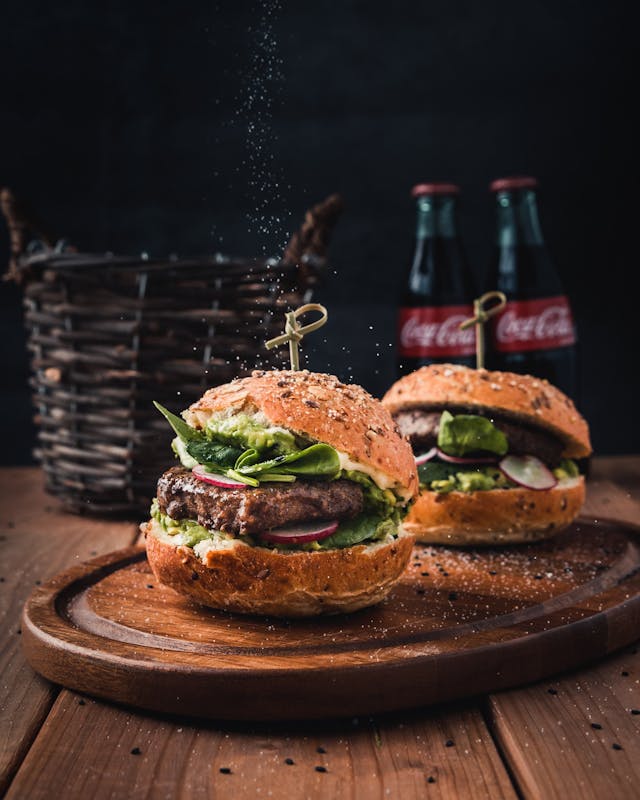
Animated burger menu button with TailwindCSS
5 min read
In this article, we will learn how to create an animated and accessible burger menu button with TailwindCSS and React. If the menu is closed, our button consists of three horizontal lines. If the button is clicked and the menu opens, the first and last lines should turn into an X, and the middle line should fade out. The result should look like this:

Let's start with the following skeleton:
type Props = { isOpen: boolean; onClick: () => void;};const BurgerButton = ({ isOpen, onClick }: Props) => ( <button onClick={onClick}>{isOpen ? "Open" : "Closed"}</button>);
We leave the state management outside of the button because the button is normally part of a menu that manages the state. The usage within the menu could look like the following:
const Menu = () => { const [isOpen, setIsOpen] = useState(false); return ( <nav> <MenuLinks isOpen={isOpen} /> <BurgerButton isOpen={isOpen} onClick={() => setIsOpen(!isOpen)} /> </nav> );};
Now we have a button that toggles the state every time we click. This is a good starting point. The next step is to add the horizontal lines.
The closed state
const BurgerButton = ({ isOpen, onClick }: Props) => ( <button className="w-5 space-y-1" onClick={onClick}> <div className="h-0.5 w-5 bg-current" /> <div className="h-0.5 w-5 bg-current" /> <div className="h-0.5 w-5 bg-current" /> </button>);
First, we use a fixed width for the button (w-5), then we add a div for each horizontal line.
Each div becomes a fixed height (h-0.5) and the same width w-5, and we use the current text color for the background bg-current.
This is nice, but it is hard to turn the horizontal lines into an X.
So we have to modify the button so that the transition becomes easier.
const BurgerButton = ({ isOpen, onClick }: Props) => ( <button className="h-5 w-5" onClick={onClick}> <div className="absolute h-0.5 w-5 -translate-y-1.5 bg-current" /> <div className="absolute h-0.5 w-5 bg-current" /> <div className="absolute h-0.5 w-5 translate-y-1.5 bg-current" /> </button>);
Now the horizontal lines have an absolute position, which makes it easier to rotate them later.
But if we use position absolute, all the horizontal lines are stacked together.
To separate them again, we translate the y-axis of the first one (-translate-y-1.5) and the last one (translate-y-1.5).
At least we have to specify a fixed height for the button (h-5), if we forget this, we could only click on the lines and not between them.
Now it's time to define the open state.
The open state
const BurgerButton = ({ isOpen, onClick }: Props) => ( <button className="h-5 w-5" onClick={onClick}> <div className={`absolute h-0.5 w-5 bg-current ${isOpen ? "rotate-45" : "-translate-y-1.5"}`} /> <div className={`absolute h-0.5 w-5 bg-current ${isOpen ? "opacity-0" : "opacity-100"}`} /> <div className={`absolute h-0.5 w-5 bg-current ${isOpen ? "-rotate-45" : "translate-y-1.5"}`} /> </button>);
Now that we want to display the lines differently based on the isOpen state, we have to turn our className attributes into template literals.
For the first line, we want to rotate the line by 45 degrees (rotate-45) and we no longer want to translate the y-axis of the line because the line should now be placed in the middle.
The last line is handled similarly to the first one, but it is rotated with -45 degrees (-rotate-45).
The middle line should be invisible (opacity-0) if the menu is open and visible (opacity-100) if the menu is closed.
Looks good, but we should talk about accessibility.
Accessibility
Our button looks nice, but it is not accessible. Let's change that.
const BurgerButton = ({ isOpen, onClick }: Props) => ( <button className="h-5 w-5" onClick={onClick}> <div className="sr-only">{isOpen ? "Close menu" : "Open menu"}</div> <div aria-hidden="true" className={`absolute h-0.5 w-5 bg-current ${isOpen ? "rotate-45" : "-translate-y-1.5"}`} /> <div aria-hidden="true" className={`absolute h-0.5 w-5 bg-current ${isOpen ? "opacity-0" : "opacity-100"}`} /> <div aria-hidden="true" className={`absolute h-0.5 w-5 bg-current ${isOpen ? "-rotate-45" : "translate-y-1.5"}`} /> </button>);
First, we add a new div with the sr-only class.
This class specifies that this element is only visible for screen readers.
The div contains textual information about what the button does, and this information is based on the state.
A screen reader is now able to read the current state of the menu.
We also have added the aria-hidden attribute to each horizontal line because they are meaningless for a screen reader.
Now we have an accessible, nice-looking button.
But the transition from one state to the other is quite bumpy.
Animation
We can make the transition much smoother with a few Tailwind classes.
const BurgerButton = ({ isOpen, onClick }: Props) => ( <button className="h-5 w-5" onClick={onClick}> <div className="sr-only">{isOpen ? "Close menu" : "Open menu"}</div> <div aria-hidden="true" className={`absolute h-0.5 w-5 bg-current transition duration-300 ease-in-out ${ isOpen ? "rotate-45" : "-translate-y-1.5" }`} /> <div aria-hidden="true" className={`absolute h-0.5 w-5 bg-current transition duration-300 ease-in-out ${ isOpen ? "opacity-0" : "opacity-100" }`} /> <div aria-hidden="true" className={`absolute h-0.5 w-5 bg-current transition duration-300 ease-in-out ${ isOpen ? "-rotate-45" : "translate-y-1.5" }`} /> </button>);
We add the following classes to each of our horizontal lines:
transition: This class specifies that the element is animated.duration-300: Specifies the duration of the animation.ease-in-out: Defines the speed of the animation.
That's it! Our burger button is ready to use.
Posted in: tailwindcss, react, css